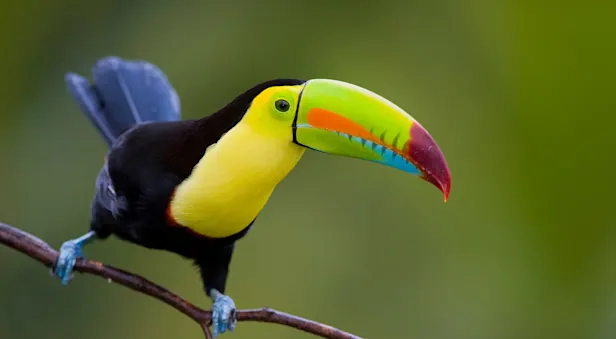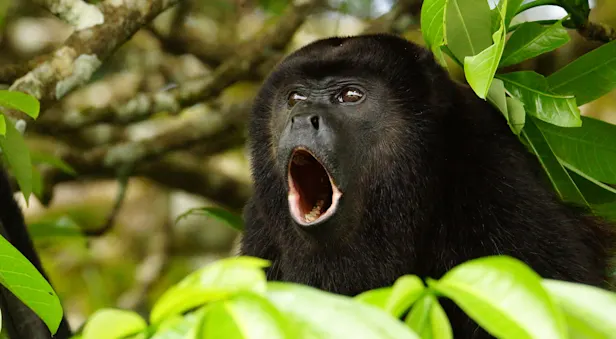Know Before You Go
Capuchin Facts | Costa Rica Wildlife Guide
The name of this distinctive-looking monkey is derived from a group of friars called the Order of Friars Minor Capuchin, which formed in 1520 in Rome, Italy, and was an offshoot of the Franciscans. They wore brown robes with hoods that came down over their eyes. New World explorers were reminded of the monk’s cowls when they saw the capuchin, with its dark body and crown surrounding a striking white face. If they seem familiar, it is probably because these monkeys are the favored companion of organ grinders.
PHYSICAL CHARACTERISTICS
They measure up to 22 inches in length.
Tails are as long as the body and covered in black fur.
Fur color varies, but it is mostly tan around the face, neck and shoulders, with the rest of the body being dark brown.
Hair is shorter and darker on the back than on other parts of its body.
When full grown, they weigh only about 2 to 3 pounds.
RANGE AND HABITAT
Capuchins range widely up to 4,500 feet throughout northern Argentina, up through Central America to some parts of the northwest coast of North America. They are able to live in a variety of habitats, including dry rain forests, but primarily they live in wet lowland forests. They live in tall trees and come to the ground only to find drinking water.
BEHAVIOR AND COMMUNICATION
As with most New World monkeys, capuchins are diurnal. Unless they are searching for food, they are probably napping. They travel in groups with up to 35 individuals, led by both an alpha male and alpha female. Their territory may cover a large area—up to 250 acres—depending on food sources, but they are not as aggressive as other monkeys about protecting this area because they are always on the move. The group may travel up to 2 miles per day within this range, looking for food.
Young females will stay with the same group over time, while young males will venture out to find other groups or to start new groups of their own. Males will fight within their group for the role of alpha male—a role that changes often.
CAPUCHIN MONKEY DEVELOPMENT

FEEDING HABITS
Capuchins are omnivores, meaning they will eat just about anything. In fact, they eat more types of food than any other monkey.
They consume flowers, seeds and leaves, as well as small birds, arthropods, mollusks, frogs and possibly other primates. While their taste is eclectic, they are actually fussy eaters; they will test a fruit’s ripeness by handling and smelling it and will even carefully pluck out larva embedded in the sweet flesh. In addition, they often raid corn crops, to which the farmers of many regions will attest.
White-faced capuchins are opportunistic foragers, quite active at dawn and late afternoon, when they may look under leaves and brush or tear the bark off a log in search of insects and small lizards. Capuchins might steal birds’ eggs and nestlings. Some coastal capuchins eat oysters and other mollusks, which they break open with rocks. Frugal capuchins sometimes hoard food for “rainy days.”
BREEDING AND REPRODUCTION
Females give birth every two years on average. There is no set breeding season, although Central American births seem to be more frequent during the dry season, which is from December through April. Gestation takes about six months, and females will give birth an average of once every two years. Adult males rarely participate in caring for the young. Infants will cling to their mothers’ chests and eventually ride on their mothers’ backs.
CONSERVATION
Capuchin monkeys can easily adapt to different environments, including areas with large human populations. Nevertheless, they are not in critical danger at this point. The most challenging obstacle for them is navigating forest fragmentation, which breaks up the large tree corridors they need in order to move around and find good food sources. Their natural predators include jaguars, jaguarundis and cougars, as well as coyotes, snakes, crocodiles and birds of prey.


























